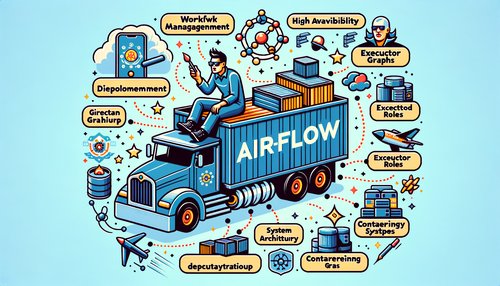Unlocking the Secrets of AWS ECR: Transform Your Container Management Strategy Today!
Have you ever felt overwhelmed by the complexities of managing containerized applications? You're not alone. The advent of containerization has revolutionized software development, but it also brings its own set of challenges. Enter AWS Elastic Container Registry (ECR), a powerful tool designed to streamline container management. This blog post will explore the ins and outs of AWS ECR, offering practical tips and insights to help transform your container management strategy.
Understanding AWS ECR
Before diving into the nitty-gritty, let's establish a foundational understanding of AWS ECR. AWS Elastic Container Registry is a fully-managed Docker container registry that allows developers to store, manage, and deploy Docker container images. It's integrated with Amazon Elastic Container Service (ECS), simplifying your development to production workflow. But why should you consider using ECR? Its scalability, security, and integration with AWS services make it an invaluable asset for any DevOps team.
Getting Started with ECR
Embarking on your AWS ECR journey might seem daunting at first, but it's quite straightforward once you know the steps. First, you need to create a repository in ECR to store your images. This can be done via the AWS Management Console, AWS CLI, or AWS SDKs. Once your repository is ready, you can push and pull Docker images using the Docker CLI. Remember, AWS IAM plays a crucial role in securing your repositories, so ensure you have the appropriate permissions set up.
Practical Example: Creating Your First Repository
Let's create our first ECR repository. Assuming you have the AWS CLI installed and configured:
aws ecr create-repository --repository-name my-first-repo --region us-east-1
This command creates a new repository named "my-first-repo" in the US East (N. Virginia) region. You'll receive a JSON response with the repository details.
Advanced Features of AWS ECR
AWS ECR is not just a container registry; it's packed with advanced features that address common container management challenges. Some noteworthy features include:
- Image Scanning: Automatically scan images for vulnerabilities when they are pushed to the repository, helping you improve the security of your applications.
- Immutable Image Tags: Prevent image tags from being overwritten, ensuring more reliable and consistent deployments.
- Lifecycle Policies: Automatically clean up unused images based on rules you define, optimizing storage costs and efficiency.
Implementing Lifecycle Policies
Lifecycle policies are a game-changer for managing storage costs and ensuring your repositories stay organized. Here's a simple example of a lifecycle policy that deletes untagged images older than 30 days:
{
"rules": [
{
"rulePriority": 1,
"description": "Delete untagged images older than 30 days",
"selection": {
"tagStatus": "untagged",
"countType": "sinceImagePushed",
"countUnit": "days",
"countNumber": 30
},
"action": {
"type": "expire"
}
}
]
}
Best Practices for Using AWS ECR
To maximize the benefits of AWS ECR, consider the following best practices:
- Implement proper tagging strategies for your images to facilitate easier rollback and deployment strategies.
- Use IAM roles and policies to control access to your ECR repositories, ensuring only authorized users can push or pull images.
- Enable image scanning to automatically assess vulnerabilities and maintain the security of your applications.
Conclusion
AWS ECR offers a robust, secure, and efficient solution for managing Docker containers. By leveraging its capabilities, from image scanning to lifecycle policies, you can significantly enhance your container management strategy. Remember, the key to successfully utilizing ECR lies in understanding its features, implementing best practices, and continuously exploring its advanced options. Transform your container management strategy by unlocking the secrets of AWS ECR today!
Whether you're just starting with containerization or looking to optimize your current strategy, AWS ECR has something to offer. Dive in, experiment, and watch your DevOps processes evolve to new heights.
Recent Posts

Unlocking the Power of Terraform: Mastering Conditional Expressions for Smarter Infrastructure Automation

Unveiling the Future: Navigating the Public Interface of Apache Airflow for Streamlined Workflow Management
Apache Airflow
Mastering Workflow Automation: Unconventional Apache Airflow How-To Guides for the Modern Data Enthusiast
Apache Airflow
Mastering the Cloud: Unveiling AWS CloudFormation Best Practices for Seamless Infrastructure Management



